You are using an out of date browser. It may not display this or other websites correctly.
You should upgrade or use an alternative browser.
You should upgrade or use an alternative browser.
The Official Coli International Infrastructure/Public works appreciation/unappreciation thread.
- Thread starter bnew
- Start date
More options
Who Replied?Download 1080p HD TikToks, Stories, Image Galleries @ Tik.fail
Tik.fail is a TikTok downloader & sharing platform. Download 1080p HD TikToks, Stories, Image Galleries. API to automate TikTok archival.

France: Free public transport takes off in Montpellier – DW – 02/21/2024
Montpellier is now the biggest metropolitan area in Europe where residents can take public transport for free. Many locals are thrilled, but others worry there won't be cash left to develop the transport network further.
France: Free public transport takes off in Montpellier
Lisa Louis02/21/2024
February 21, 2024
Montpellier is now the biggest metropolitan area in Europe where residents can take public transport for free. Many locals are thrilled, but others worry there won't be cash left to develop the transport network further.
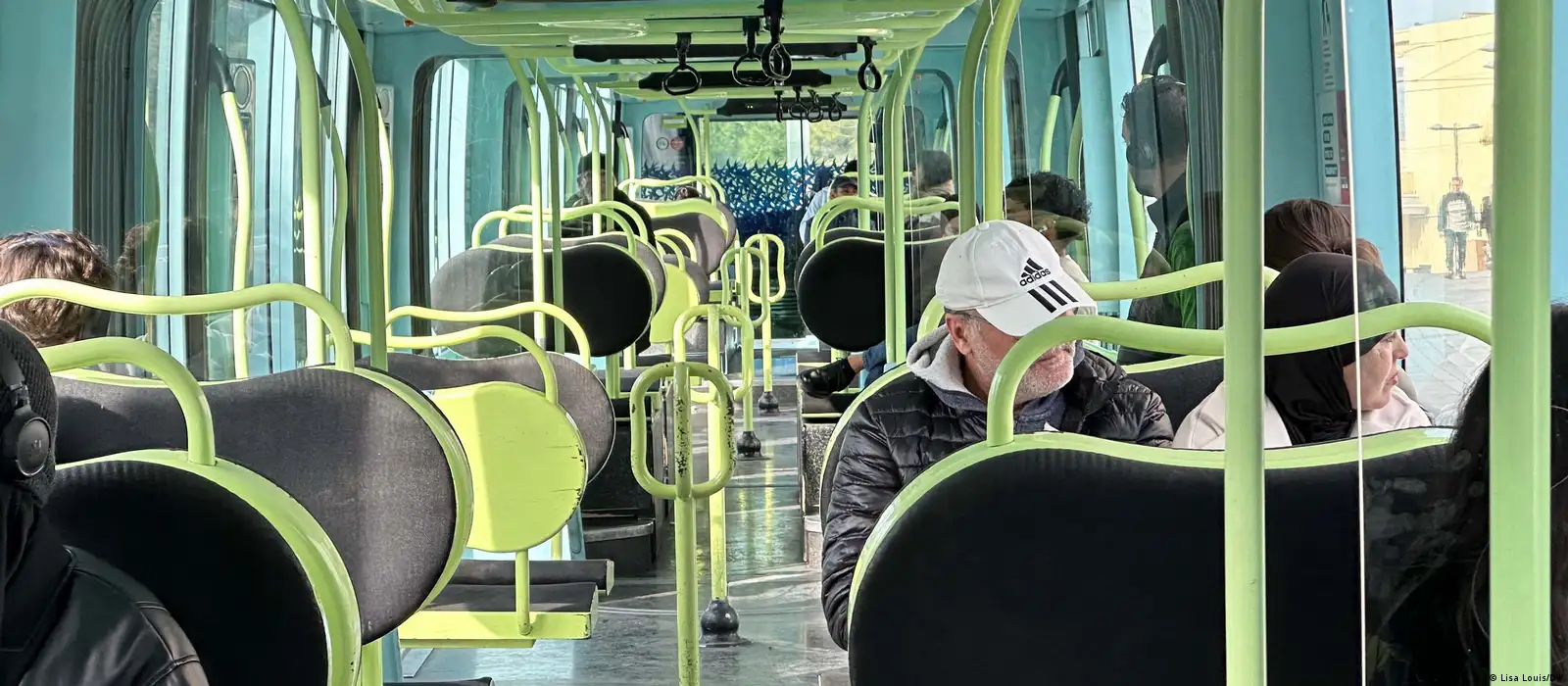
A free public transport scheme in Montpellier, France is encouraging locals to leave their cars at homeImage: Lisa Louis/DW
Since the 21st of December 2023, the half a million inhabitants of the southern French city of Montpellier and its surroundings no longer have to pay for public transport. Many of them are pleased with the measure – but there are caveats.
Thirty-one-year-old Rayene Chabbi is relieved she no longer has to pay for the bus and the tram she takes to work on weekdays, like on a recent Monday morning.
In the past, she'd often drive her parents' car the seven kilometers (four miles) to the office.
"Free public transport is a really good idea – especially for people like me who think twice before spending €50 ($54) on a monthly subscription. I only earn €1,950 gross each month," she told DW while waiting for her bus.
"It's similar for my sister who now also uses public transport," she added.

Rayene Chabbi says free public transport means she no longer drives her parents' car to the officeImage: Lisa Louis/DW
Less stress, better for the environment
Half an hour later, Chabbi gets off a tram in Montpellier's northeastern neighborhood of Castelnau-le-Lez."Taking the car would have taken at least ten minutes longer and I would certainly have been stuck in traffic jams. I like this stress-free way of traveling. Plus, I'm protecting the environment," she said while walking the few hundred meters to the company Simax, where Chabbi works as the manager's assistant.
The mid-sized company, which provides management software for businesses, co-finances the free public transport scheme via a two-percent wage tax, as do about 2,500 other companies in Montpellier that employ 11 staff or more. Overall, the measures cost €30 million ($32 million). That's compared to the city's total budget of €1 billion.
CEO Miren Lafourcade doesn't mind paying up – on the contrary.
"Our company used to be in an area with poor public transport connections. That's why we moved to this location, which is just a 3-minute walk from a tram stop. For once, the taxes we pay are being used for something that benefits society," she told DW.
Simax currently employs 60 people and has an annual turnover of €1.5 million ($1.6 million). It aims to recruit up to ten more staff this year – with sustainability, which includes public transport, set to remain a crucial element of its expansion plans.
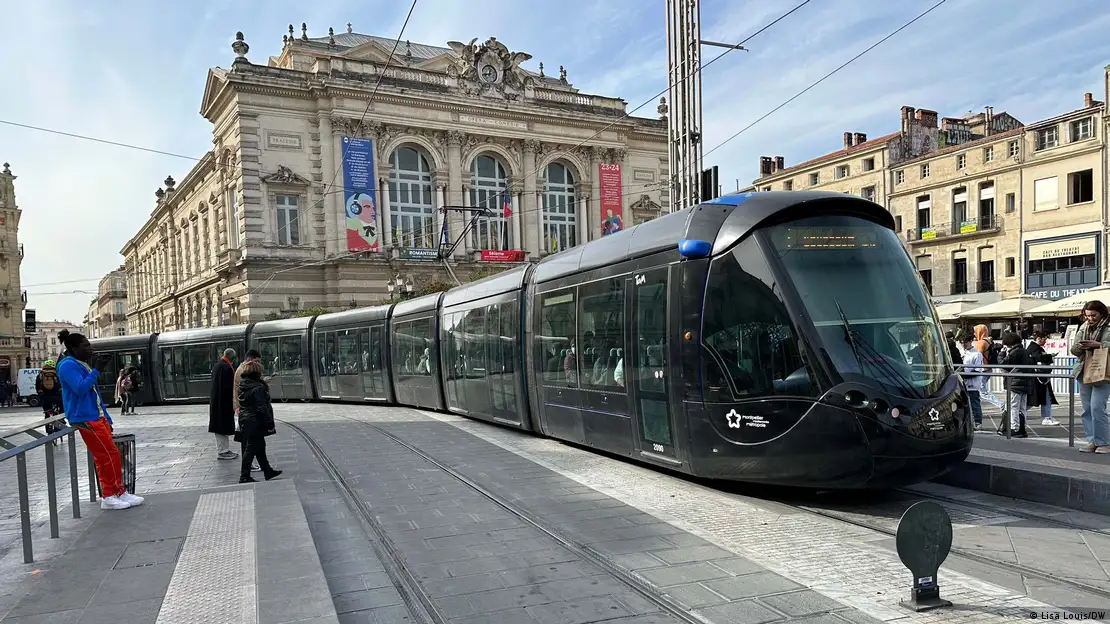
The project is co-funded through a 2% wage tax on companies with more than 11 employeesImage: Lisa Louis/DW
Part of larger climate adaptation scheme
Julie Frêche, vice-president of the metropolis of Montpellier and in charge of transport matters, is pleased with such efforts."We aim to implement positive environmental politics. Free public transport increases citizens' purchasing power," she said to DW.
"Plus, the measure improves air quality," Frêche added.
Montpellier is also taking other climate adaptation measures – especially as temperatures here can reach almost 50 degrees Celsius in the summer.
The city is planting greenery and will add 50,000 trees by 2026.
"We are also constructing 235 kilometers of additional bike lanes and adding five bus routes to the 41 existing ones and a fifth tram line," Frêche stressed.
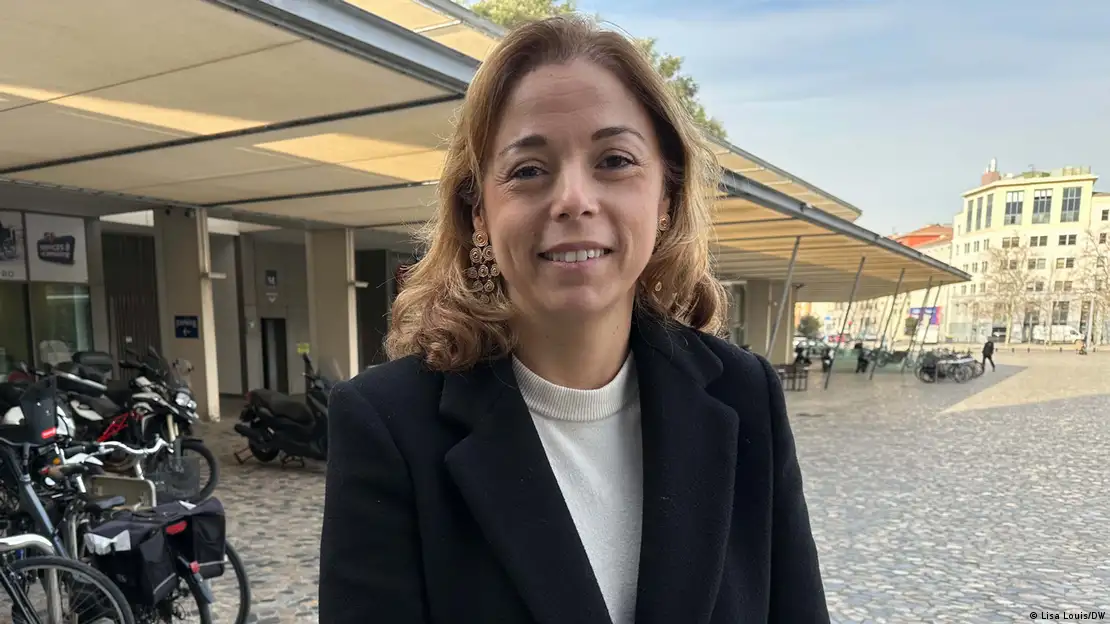
Vice president of the metropolis of Montpellier Julie Frêche says free public transport gives purchasing power back to citizensImage: Lisa Louis/DW
But not everywhere in Montpellier is served in the same way
That new tramway will also connect Saint-Jean-de-Vedas. The neighboring town, part of greater Montpellier, has about 12,000 residents – and counting. Numerous new apartment blocks are springing up here.That's why Hugo Daillan thinks more public transport connections will be needed.
The 28-year-old lives in central Montpellier and works in a flower shop in Saint-Jean-de-Vedas. He's traveling with a group of public transport passengers when he speaks with DW.
"This is Saint-Jean-de-Vedas' only tram stop. The tram only runs every 15 minutes, even though at the end of the workday, people need to get home. And so many people here take the car instead. The transport connection is so bad, that the local town hall has set up a shuttle in one district – which you have to pay for," Daillon told DW while pointing at the destination board.
He also stressed that the "free" public transport scheme wasn't actually free.
"The price we are paying is that that money can't be invested in expanding the current transport network," he said.
"When making public transport free, you need to make sure all parts of the city have access to the transport network, especially in a growing city like this one. Or else you only please people in the well-connected center and forget about those living in the outskirts," Daillan said.
Alexandre Brun, lecturer for geography at Montpellier's University Paul-Valéry, agrees with that view.
"The city should also build new connections between suburbs so that you no longer have to travel through the city center to get to another suburb," Brun told DW.
He also fears the wage tax could deter companies from setting up offices in Montpellier.
"And we still need additional companies to bring down unemployment," he added.
Montpellier's unemployment rate stood at 9.6% in 2023, about two points above the national average.
Drivers and economists are fans
But drivers questioned in Saint-Jean-de-Vedas seemed to welcome the free transport scheme – at least those who don't have to commute to the city center."It's very convenient. I now regularly take public transport to go shopping in the city center," Claire Maurin, a 40-year-old nursery school teacher told DW.
Pierre Chanal, 66, was getting out of his car a few meters further down the road.
"Traffic is intense in the city center and parking fees are high," the pensioner told DW. He said that taking public transport is a lot faster and more relaxed.
Fady Hamadé, economist and director of Montpellier-based think tank Institute of Environmental Resources and Sustainable Development Economists, shares that enthusiasm.
"Like every public service, this is a tool for income redistribution," he told DW.
"It has positive external effects. It lowers the city's CO2 emissions and pollution. It also seems to be leading to new shops opening and more social diversity in the city center, as it's easier for people to get around," he added.
Edited by: Kristie Pladson
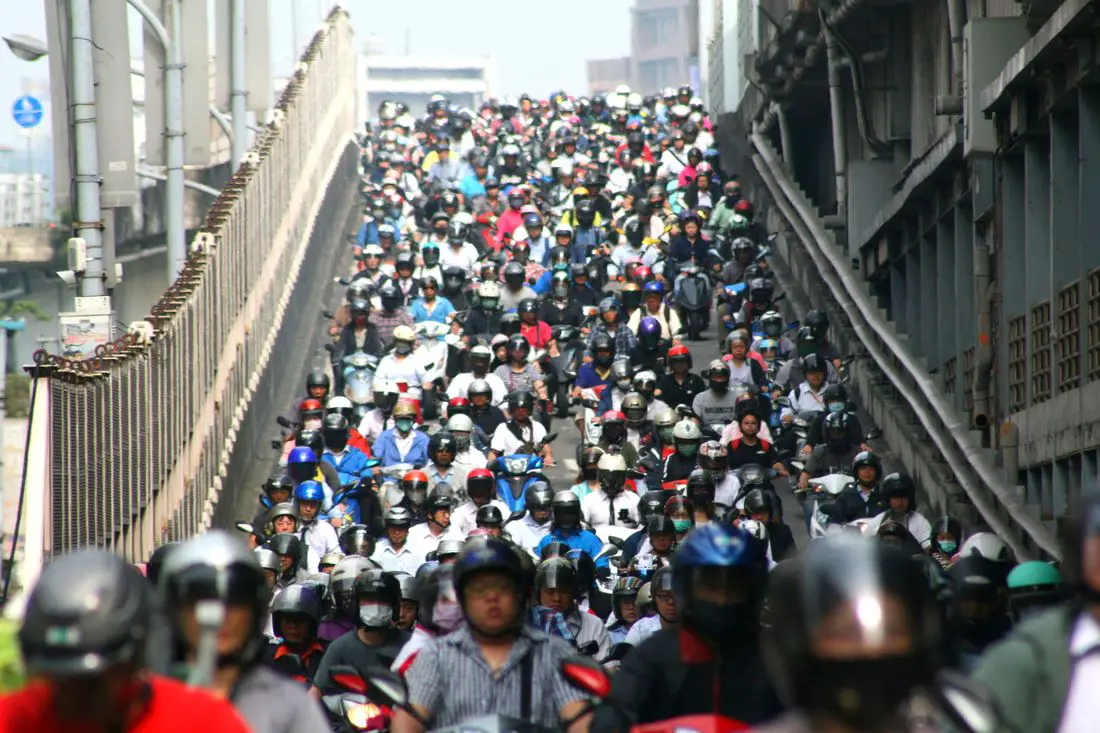
Taipei Scooter Waterfall 民權西路機車海
Travel guide to the Scooter Waterfall on Minquan West Road in Taipei. The scooter lane coming off the Taipei Bridge from Sanchong into Taipei onto Minquan West Road is one of the most impressive traffic sights in Taiwan, and has become an iconic photo des
www.foreignersintaiwan.com

The scooter lane coming off the Taipei Bridge from Sanchong into Taipei onto Minquan West Road is one of the most impressive traffic sights in Taiwan, and has become an iconic photo destination. Rows of 10-20 scooters across and 20-40 scooters deep. So there can be about 200-800 Scooters on this bridge ramp at a time.
1/1
A fascinating guide to the Panama Canal's locks using a timelapse video and animated map.
A fascinating guide to the Panama Canal's locks using a timelapse video and animated map.
1/1
You've seen me share a few maps and videos of the Panama Canal. I love that engineering marvel. This animation shows a map and a timelapsed journey through the canal. 15 seconds worth watching!
You've seen me share a few maps and videos of the Panama Canal. I love that engineering marvel. This animation shows a map and a timelapsed journey through the canal. 15 seconds worth watching!

Pedro Marques | Toronto (@ipedro) on Threads
Museum Station's new Second Exit/Entrance is now complete & opens tomorrow May 31st. Located at the the northern end of Queen's Park Circle, it features PRESTO-enabled gates, automatic doors, improved signage and a bike channel. – via TTC Toronto
 www.threads.net
www.threads.net

Pedro Marques | Toronto (@ipedro) on Threads
Toronto needs more subway entrances that open into parks. 😍🌳
 www.threads.net
www.threads.net
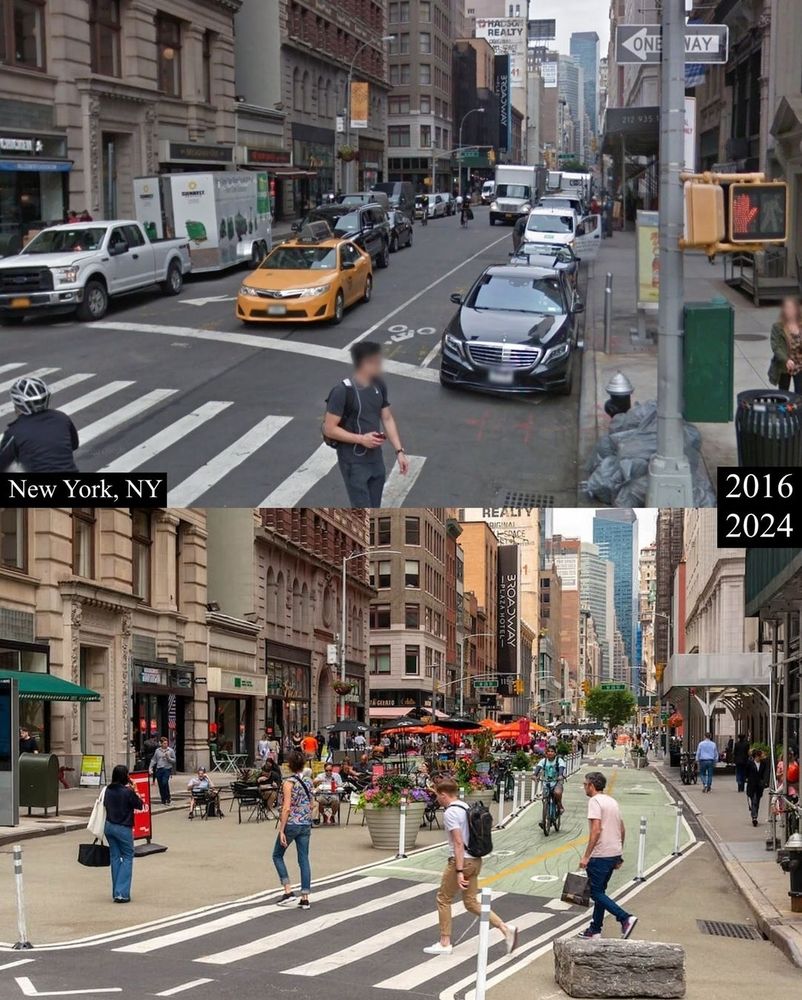
Mario Sixtus (@sixtus.net)
New York City ist bekanntlich eher ein Dorf, das man nicht mit einer Metropole wie Berlin vergleichen kann.



A Quarter of America's Bridges May Collapse Within 26 Years. We Saw the Whole Thing Coming.
Engineers are scrambling to prevent disaster, but is it too late after decades of neglect?
A Quarter of America's Bridges May Collapse Within 26 Years. We Saw the Whole Thing Coming.
Engineers are scrambling to prevent disaster, but is it too late after decades of neglect?
By Darren Orf
Published: Sep 06, 2024 11:43 AM EDT

fmajor//Getty Images
Around 25 percent of bridges in the U.S. were built before the 1960s, and in an age of climate change, these ailing pieces of infrastructure are starting to feel the heat.
According to a new report by The New York Times, bridges are facing unprecedented pressures from climate events, including large temperature swings, increased flooding, and troublesome soil erosion.
A bipartisan infrastructure bill passed in 2021 earmarks $110 billion for rebuilding the nation’s aging roads, bridges, and highways, but these new projects need to build in preparation from our climate change future.
U.S. infrastructure is dangerously behind the times—and nowhere is that more apparent than the country’s aging bridges. According to a new report by The New York Times, one-fourth of the nation’s bridges were built before 1960, and as if old age wasn’t enough stress on these rusted-out trusses, cracked asphalt roadways, and worn-down foundations, climate change has only made a bad problem worse.
“We have a bridge crisis that is specifically tied to extreme weather events,” Paul Chinowsky, a civil engineering professor at the University of Colorado Boulder, told The New York Times. “These are not things that would happen under normal climate circumstances. These are not things that we’ve ever seen at this rate.”
Due to the age of these bridges, many of them were designed without the need to withstand the sharp temperature swings that are now commonplace across the U.S. due to climate change. As metal tends to have that pesky habit of swelling and contracting with rising and failing temperatures, our warming world becomes a particularly thorny issue for these ailing pieces of connective infrastructure.
This isn’t a recently discovered threat. A report back in 2019 published in the journal PLOS ONE found that 25 percent of all steel bridges in the U.S. could collapse by 2050. After waiting for that often-promised, but never-arrived infrastructure week under the Trump administration, the U.S. government started moving in 2021 by passing the bipartisan infrastructure law, known as the Infrastructure Investment and Jobs Act, that allotted $110 billion for roads, bridges, and other transportation needs.
As recent as July 2024, U.S. Transportation Secretary Pete Buttigieg announced $5 billion toward repairing, restoring, or replacing, 13 bridges located across 16 states in the U.S.
“For too long America let bridges fall into disrepair, which left people less safe, disrupted our supply chains, and cost people time and money,” Buttigeg said in a press statement back in July.
But the challenge to these economic ties between states and landmasses is only worsening as the world warms. Jim Tymon, executive director of the American Association of State Highway and Transportation Officials, told The New York Times that groups of scientists, engineers, and agencies are rushing to implement climate-resilient standards for bridges.
This problem is also bigger than just some shape-shifting metal. Intensified rainfall has the increased chance of bridges being washed away, something that was an all-too-common occurrence during the torrential flooding events in Vermont in July. Heavy precipitation also increases “bridge scour,” which erodes the soil around the base of a bridge making it less stable.
Meanwhile, swollen bridge joints also make steel bridges, which are designed to bend under heavy loads to distribute weight, much more rigid, running the risk of putting more weigh than what the beams were designed to hold.
The Federal Reserve’s Economic Data suggests that the U.S.’s percentage of public investment toward infrastructure decreased 40 percent since the 1960s, so the bill’s been long overdue for America to revamp its roads, bridges, and public transportation. Now with the added complication of climate change, there is really no time to waste.
Similar threads
- Replies
- 4
- Views
- 401
- Replies
- 0
- Views
- 243


 How the Silver Bridge Came Crashing Down
How the Silver Bridge Came Crashing Down